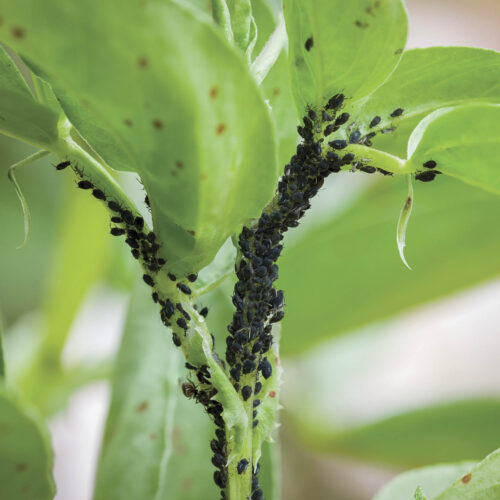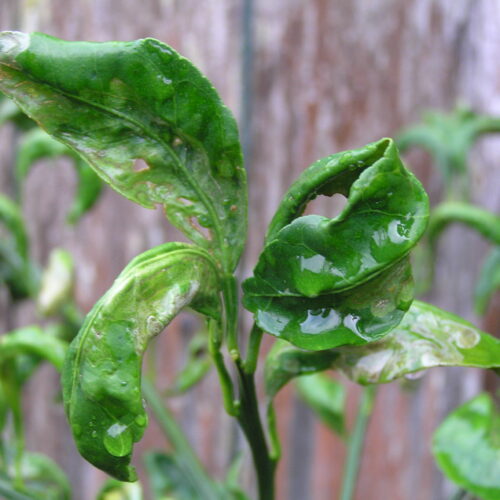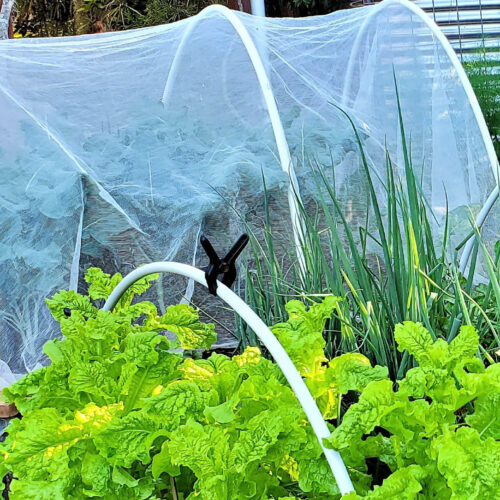Pennyroyal and ants
2014-02-16T03:29:17+11:00
Pennyroyal, says PENNY WOODWARD, helps to control ants and other pests.
The hot dry weather brings out all manner of insects, but the most problematic at present are the ants. When we lived in an area with sandy soils they were a constant problem coming in to the kitchen and bathrooms looking for moisture. In our current house we are surrounded by heavier clay soils and ants haven’t been a problem inside, but I have had some issues with them in pots outside. I dunk the smaller pots in soapy water and then rinse through well with fresh water. The ants exit pretty quickly. But my lime in a half wine barrel is a bit too big to move, so instead I planted pennyroyal around the outside. It took twelve months but the ants that had been nesting in the soil, in the base of the pot, disappeared.
Pennyroyal (Mentha pulegium) has leaves that are slightly hairy and narrowly elliptic, while the mauve (or sometimes white) flowers grow in tiers of whorled clusters. Sometimes called fleabane, it has a camphor/peppermint scent and does best in moist, humus-rich soils in semi-shade. Grow new plants from seed or by root division in spring and summer. It spreads rapidly from underground runners and can be a problem invading river banks and other damp areas. So don’t grow it if you live near these sorts of bush regions.
There is also a native pennyroyal (M. satureioides) that has similar properties. It grows to about 30cm, with a creeping habit and opposite green leaves that taper at both ends. The flowers are white and occur in spring. This pennyroyal will grow in dry and damp places and is found Australia-wide. The whole plant has a strong mint smell and the leaves contain oil rich in pulegone, the same oil that is found in M. pulegium. Pennyroyals act by deterring insects from feeding and can be strewn on benches or shelves to repel ants or grown near the point where they enter the house. Pennyroyals are also good mosquito and flea repellents for people and pets—grow them near dog kennels and in damp corners of the garden where mosquitoes may breed.
When I’m working in the garden, if mosquitoes are a problem, I grab a few leaves and rub them on any exposed bits of skin. This will also keep flies away for short periods.
Dried leaves of pennyroyal sprinkled on bookshelves deter silverfish. In the days of early settlement native pennyroyal was strewn on the floor, hung in bunches and used to stuff mattresses to repel fleas and bed bugs. Crushed pennyroyal leaves rubbed into your pets coats will help to keep flies and fleas away, or try pennyroyal oil made using the instructions below. Alternatively place bunches of leaves in their kennels or baskets. You can make pennyroyal oil in a wide-mouthed glass jar. Fill with crushed pennyroyal leaves, cover with an unscented oil (light olive, safflower or sunflower are all suitable). Place on a sunny windowsill for about three weeks, shaking every few days. Strain and use. Try sprinkling a few drops of pennyroyal oil into water to repel mosquitoes, or rub it on your skin.
Although in the mint family, the oils found in pennyroyal are not as safe as those found in spearmint and peppermint. Pennyroyal should never be eaten by pregnant women or young children, or in excess by anyone.






